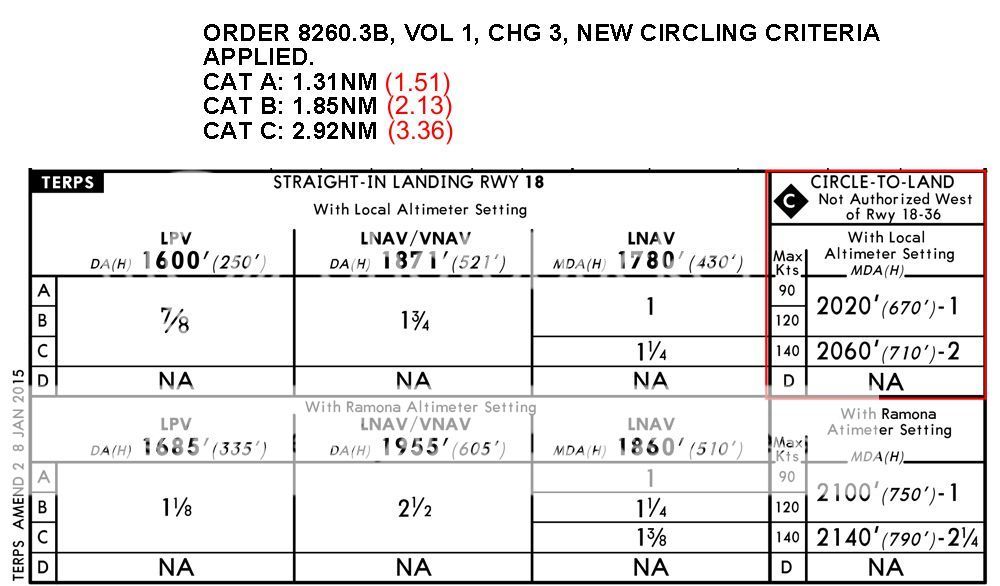It seems obvious that the FAA does not expect the pilot to keep the runway threshold in sight while circling. The
NBAA document clearly shows the radii measured from the respective runway threshold, so I don't see how you can keep the threshold in sight while circling within the inverse C tolerances. You might see other parts of the airport, but not the runway you are supposed to be maneuvering towards.
Edit: looking at the
Instrument Rating PTS, and specifically at the "D. TASK: CIRCLING APPROACH" section, I don't see where it conflicts with FAR 91.175(e)(2) which says missed approach should be executed if "an identifiable part of the airport is not distinctly visible to the pilot during a circling maneuver at or above MDA, unless the inability to see an identifiable part of the airport results only from a normal bank of the aircraft during the circling approach." The PTS simply says "Does not exceed the visibility criteria" (during the circling approach) without specifying to what point, so there is no conflict there that I can see.
I do think that with the new inverse C tolerances you may lose contact with the runway threshold while maneuvering (even wings level), but presumably by identifying some landmark on airport property you may continue.

